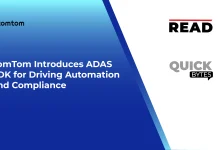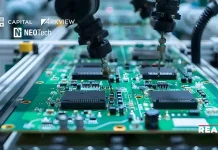Automotive cruise control has become a must-have feature in today’s cars. It’s all about making your life on the road easier and more comfortable. This cool electronic system lets you set your desired speed, and then your car takes care of the rest, so you can relax and enjoy the ride without constantly fiddling with the controls. It’s like having a personal assistant that keeps you on track while giving you the freedom to focus on other things.
According to Extrapolate, the global automotive cruise control market is estimated to accrue a valuation of $53.01 billion by 2028. Let’s learn more about this billion-dollar industry.
What is Automotive Cruise Control?
An electronic device known as automotive cruise control enables a car to keep the speed at which the driver has programmed it. It is beneficial on highways and lengthy sections of roads because it is made to be used on routes with few stops. The cruise control system modifies the accelerator position to regulate the vehicle’s speed.
Okay, so here’s how it works. Traditional cruise control systems use electronics to communicate with the throttle. These sensors are connected to an Electronic Control Unit (ECU). When you set your desired speed, the ECU figures out where the throttle should be and wirelessly tells it to stay put. No matter what the road is like, your car will keep cruising at that speed. With cruise control, you can rest your feet and enjoy a smooth ride without constantly messing with the pedals.
Benefits of Automotive Cruise Control
- Avoid Driver Fatigue: The primary advantage of cruise control in cars is to avoid driver fatigue. It permits the driver to keep their vehicle at a set speed without needing to apply pressure to the gas pedal continually.
- Better Mileage: The cruise control in the car also helps with better mileage. Cruise control minimizes fuel usage by driving at a constant speed, which helps stop the driver from pressing the accelerator or the brake pedal unnecessarily for a long period. Thus, it saves money in the long run and also decreases emissions.
- Speeding Check: With the cruise control, one can simply set the speed at which one desires to travel, and the cruise control system will manage the accelerator for you. This way, it avoids any unintentional speeding and also helps in keeping a check that you are not exceeding the speed limit. Hence, preventing the speeding tickets
- Enhance the performance of the vehicle: Cruise control can also enhance the performance of your vehicle. It allows the engine to stay at a specific RPM for extended periods, which helps in the better functioning of the vehicle and also improves its pick-up during non-cruise mode.
- Auto-Stop Traffic Condition Management: Many of today’s cruise controls can detect stop-and-go traffic conditions through integrated sensors and will automatically adjust speed to minimize vehicle idling, thus saving fuel and reducing emissions.
Difference Between Automotive Cruise Control and Adaptive Cruise Control
Automotive cruise control and adaptive cruise control (ACC) are two systems that help drivers maintain a desired speed while driving. But there are some important differences between the two:
Automotive Cruise Control
With automotive cruise control, you can pick a set speed, and your car will keep that speed until you change it or turn it off. You have to watch the road and change the speed when needed, like if there’s slower traffic or the road changes. Car cruise control won’t change your speed on its own if you get too close to another car.
Adaptive Cruise Control (ACC)
Adaptive cruise control is a different story, thanks to the added sensors and technology. Adaptive cruise control can slow your car down and then speed it back up to maintain a safe distance between your vehicle and the vehicle ahead. Using built-in sensors, such as radar or a camera, your adaptive cruise control system can measure the distance and speed of the vehicle ahead of you. Then, it accelerates or decelerates your vehicle to maintain a safe distance and consistent speed with the vehicle in front of you. Some advanced systems will even bring your car to a full stop if the way ahead is completely blocked.
So, while both automotive cruise control and adaptive cruise control help you travel at a selected speed, the adaptive system will actually accelerate and decelerate your vehicle based on the speed of the vehicle in front of you.
Is Automotive Cruise Control Self-Driving?
Nope, the cruise control system in your car doesn’t count as a self-driving feature, even though it does lighten the load for the driver. It helps maintain speed and keep a safe distance from other vehicles, but you still need to stay alert and in control at all times. According to the SAE’s scale of driving automation, cruise control falls under Level 1, and it only goes up to Level 2 when combined with lane centering. But it’s still a long way from the Level 5 required for full autonomy.
Now, some newer systems are creeping up to Level 3, which allow drivers to briefly take their hands off the wheel under certain conditions. These systems can handle accelerating, braking, and steering, but you have to be ready to take over at any moment.
Ford’s BlueCruise and GM’s Super Cruise are examples of Level 3 technology made in America. They rely on fancy sensor arrays and detailed road mapping, but they’re limited to specific roads and conditions. Jeep is also working on a similar system. Tesla’s Autopilot is probably the most famous semi-autonomous driving system out there, but it hasn’t always performed as well as Super Cruise.
Bottom Line
The simplicity of automotive cruise control makes it a useful function. It not only reduces driver fatigue but also contributes to increased fuel economy. You may establish and maintain your preferred speed using cruise control, saving you from continuously adjusting the settings. It’s ideal for lengthy road journeys when you want to unwind and enjoy the trip. It’s all about encouraging safer driving because it helps you stay inside speed restrictions. Cruise control is undoubtedly a tool that enhances comfort and control when driving, but it’s also important to pay attention and adopt safe driving practices.
Browse More Posts:-
Online Dating Market
Primary Cells Market
Amino Acids Market
Stripping Machine Market




